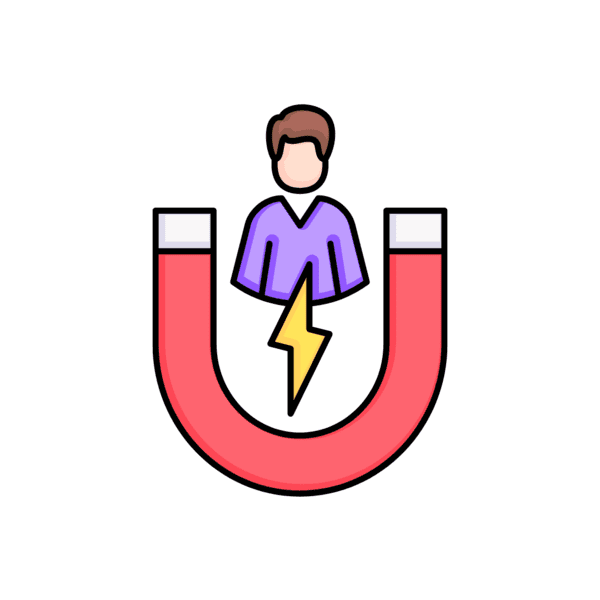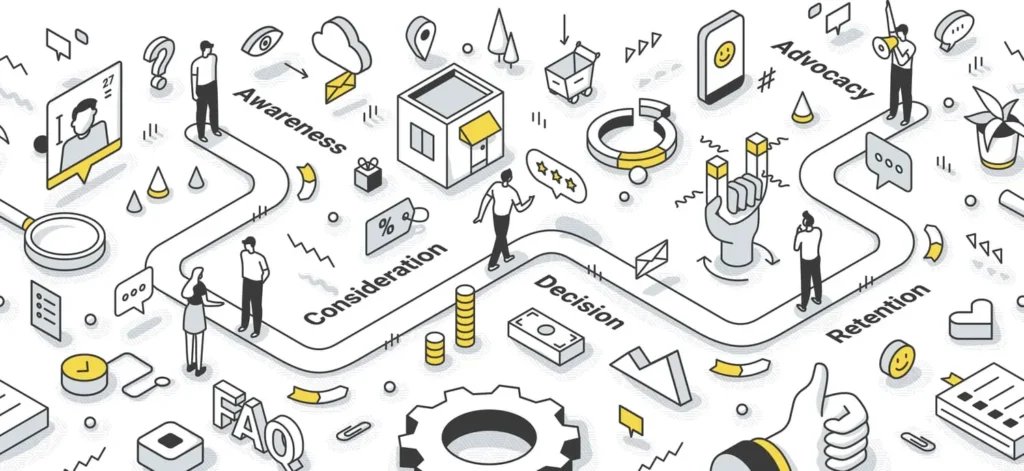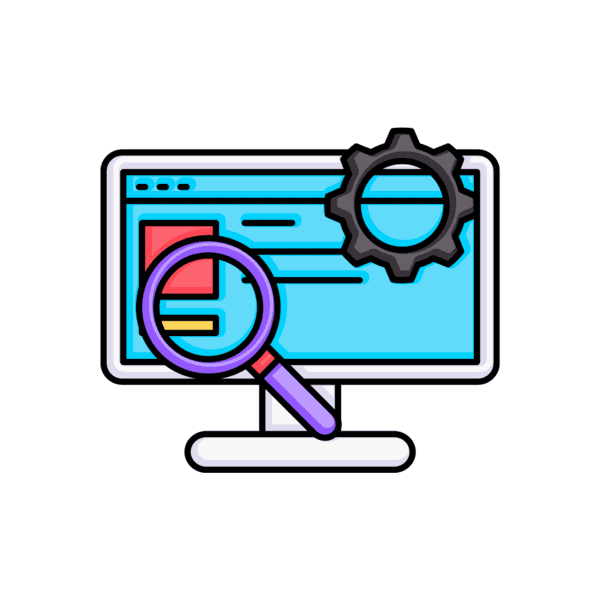When it comes to marketing, it’s crucial to know your customer well. It’s not just about knowing who they are but also how they interact with your brand. Customer journey analysis is a method that looks at every step a customer takes before they decide to buy something. This includes everything from when they first hear about your brand to how they interact after they’ve made a purchase.
You can create better marketing strategies and improve your customers’ overall experience with your brand by understanding their path to purchase. In today’s world, with so many options available, focusing on your customers’ needs is really important. This article will help you understand what customer journey analysis is. It will also show you how it can help you increase sales, build loyalty, and grow your business.
Defining the Customer Journey Analysis
At its core, a customer journey analysis is a strategic planning framework that enables companies to gain a better understanding of the paths that their customers take. It’s not a one-size-fits-all model. It’s a customised map that’s unique to your customers’ buying process. This analysis details step-by-step what a customer experiences, feels, and behaves at each stage of the buying process. It provides a narrative that bridges the gap between data and a truly customer-centric strategy.
For marketers, business owners, and entrepreneurs, the results of this analysis translate into clearer insights into customer needs, wants, and expectations and a sharpened ability to align marketing messages, products, and services accordingly. With this data-driven approach, businesses can anticipate and respond to customer behaviour.

Understanding the Customer Journey
The customer journey is not linear. Instead, it’s a dynamic ecosystem influenced by various internal and external factors. Awareness, consideration, purchase, and post-purchase are the typical stages of this journey.
- In the awareness stage, customers identify a problem or become aware of a solution. This is often the result of a trigger, which can be anything from seeing a social media ad to a friend’s recommendation.
- In the consideration stage, customers consciously begin to consider what they want to buy. They research, compare brands, and weigh their choices. The availability of information and the ease with which it can be accessed strongly influence this stage.
- The purchase stage is where the customer’s decision-making process culminates. This is where the actual transaction takes place, whether online, in-store, or through another channel. It’s important to note that this stage is not necessarily the end of the customer journey. It also includes the purchase experience.
- Finally, the post-purchase stage involves evaluating what they decide to buy. This can lead to satisfaction or regret. It also informs their potential for repeat business and brand advocacy. It’s a stage that many companies overlook. But it’s critical to maintaining a loyal customer base.
Whether online or offline, qualitative or quantitative, every interaction a customer has with your brand provides critical data points. It could be web traffic, social media, customer service, or sales analytics.
Companies can build an accurate picture of the customer journey by aggregating and analysing this data. It can show where customers are dropping off, what’s preventing them from converting, and where customers need a nudge to keep moving forward.
Customer Journey Analysis: Tools and Techniques
– Google Analytics (GA)
Google Analytics stands out for its comprehensive tracking capabilities and broad accessibility. It provides insights into user traffic, website behaviour, and the effectiveness of your marketing campaigns. GA’s strength lies in its ability to integrate with other Google services, such as Google Ads. This makes it invaluable for tracking conversions and understanding how users arrive at your site. In addition, marketers can tailor their content and advertising strategies to their demographic and interest reports.
– Adobe Analytics
Adobe Analytics provides advanced segmentation, real-time analysis, and cross-channel data collection. This tool is especially valued for its powerful data visualisation capabilities. It allows marketers to create detailed and customisable reports. It excels at tracking customer journeys across multiple devices and touchpoints. This provides a more nuanced understanding of the customer experience. Organisations that want to understand customer behaviour and refine their marketing strategies deeply will benefit from this level of detail.
– Mixpanel
Mixpanel is unique in its event-centric approach to tracking user interactions with your website or application. This makes it ideal for SaaS companies and mobile applications, allowing for in-depth analysis of how users engage with specific features. With Mixpanel, companies can track conversions, perform cohort analysis and measure retention, providing actionable insights to improve user experience and product development.
– Hotjar
Hotjar offers a unique set of tools designed to help you understand user behaviour through heat maps, session recordings, and surveys. It helps identify usability issues and areas for improvement by visually depicting where users click, move, and scroll on your site. You can also gain immediate insight into user satisfaction through its real-time feedback tools. This qualitative analysis provides a more complete picture of the customer experience, complementing the quantitative data collected by other analytics platforms.
Each tool offers distinct advantages when it comes to customer journey analysis. Depending on your specific business needs, the depth of insight you require, and the complexity of your customer journeys, you can choose the right tool or combination of tools.

Customer Journey Analytics Metrics
Companies need to look at a variety of metrics that show how customers are feeling and help them make smart decisions in order to understand the customer journey fully. Important things to measure include:
- Customer Satisfaction Score (CSAT): This metric measures how satisfied customers are with your product or service immediately after interacting. It’s a valuable indicator of short-term satisfaction and can be measured through surveys with questions rated on a scale.
- Net Promoter Score (NPS): NPS is a measure of customer loyalty and the likelihood that customers will recommend your brand to others. It’s a critical metric for understanding how customers perceive the overall brand and how to build advocacy.
- Customer Effort Score (CES): CES is a measure of how easy it is for customers to solve their problem, use your product, or get what they want from your service. Lower effort scores indicate a smoother customer experience, which can lead to higher satisfaction and loyalty.
- Conversion Rate: This metric tracks the percentage of users who take a desired action, such as making a purchase, signing up for a newsletter, or any other key performance indicator (KPI) relevant to your business goals. A high conversion rate indicates effective customer engagement at key touchpoints.
- Churn Rate: The churn rate measures the percentage of customers who stop using your service or switch to a competitor within a given period. It’s critical for understanding customer retention. It can also pinpoint areas where the customer experience may be falling short.
- Customer Lifetime Value (CLTV): CLTV predicts the total value your company can expect from a single customer account. Based on the expected profit margin, it helps companies decide how much to invest in retaining existing customers and acquiring new ones.
- Average Resolution Time: This metric tracks the average amount of time it takes to resolve customer issues. It’s an important indicator of the efficiency of your customer service team and the overall satisfaction of your customers.
- Traffic Sources: Understanding where your traffic is coming from (organic search, paid advertising, social media, and more) can help you identify which channels are most effective in acquiring prospects and driving engagement throughout the customer buying cycle.

Benefits of Customer Journey Analysis
Enhancing User Experience
Companies can make targeted improvements to their user experience by identifying pain points and friction points in the customer journey. A seamless customer experience is directly linked to satisfaction and, ultimately, loyalty.
Improving Conversion Rates
Understanding where and why customers drop off can lead to strategic interventions that keep them moving through the funnel. This can be done through improved messaging, more informative content, or a more streamlined checkout process.
Building Customer Loyalty
Comprehensive analytics can help you better understand what makes customers happy. This can lead to more frequent and satisfying interactions. This personalised experience leads to marketing’s holy grail: loyalty.
Real-World Application and Case Studies
Examples of companies’ use of customer journey analytics abound. Amazon, for example, has mastered the art of personalising the user experience by closely monitoring and analysing its customers’ browsing and purchasing behaviour. The result is a sophisticated system of product recommendations that is a significant part of the company’s revenue.
Spotify provides another notable example of how to analyse the customer journey effectively. By using data on listening habits, Spotify is able to create personalised playlists and recommendations that increase user satisfaction and engagement. This tailored approach not only improves the listening experience but also increases the likelihood that users will subscribe to the company’s premium service.
Airbnb’s use of customer journey analytics to redesign its booking process is an example of the power of understanding customer behaviour. Initially, new users found their booking system confusing, leading to a drop in conversion rates. By analysing customer feedback and behaviour, Airbnb was able to identify and resolve these issues. This simplified the booking process and significantly increased conversion rates.
These case studies underscore the importance of customer journey analysis in creating successful, user-centric business strategies.
Our Journey Analysis Case Study
A major overhaul of our customer journey analysis strategy a year ago has been one of our most memorable success stories. Initially, we faced significant challenges. We had data silos and an unclear understanding of our customers’ needs and pain points. This lack of insight was reflected in our stagnant sales and declining customer satisfaction scores.
We decided to take a more integrated approach to data collection and analysis. We began to paint a clearer picture of our customers’ journeys by implementing advanced analytics tools and fostering a culture of collaboration across departments. This shift allowed us to see where we were losing potential customers and identify opportunities for improvement.
One particularly revealing moment was the realisation that many customers were dropping out at the consideration stage due to a lack of clear information about our product’s features in comparison to the competition. To provide more comprehensive and comparative information, we enhanced our content marketing strategy. Personalised email campaigns and an AI-driven recommendation system on our website supported these efforts.
The results spoke for themselves. Within six months, we saw a 25% increase in consideration-to-decision conversion rates. Customer feedback also reflected an appreciation for the more personalised and informative approach. This success taught us the importance of understanding the customer’s perspective and the power of data-driven decision-making.

How to Implement Your Strategy Using Customer Journey Analysis
- Start by identifying your organisation’s key customer lifecycle stages.
- Decide which touchpoints to measure, then select the appropriate tools.
- Collect the data and then interpret it to create a cohesive picture of the customer’s journey.
- Team involvement is essential. Each department should map the customer interaction as they perceive it and then consolidate these perceptions to form the basis of your analysis.
- Data silos, lack of expertise, and misaligned goals are common challenges in customer journey analysis. Integrated software can help overcome data silos, while ongoing training can address expertise issues. Align organisational goals with a clear, shared vision of success.
Future Trends in Journey Analysis
Advances in technology will shape the future of customer journey analysis. Artificial intelligence promises more nuanced insights and predictive capabilities. Customer needs can be anticipated, and personalisation can be automated on a larger scale through predictive analytics.
Another frontier is personalisation at the individual level. The fusion of customer data with AI can create a deeply personalised customer experience that fosters a sense of one-on-one interaction with your brand.
Another trend that will reshape the landscape is the integration of augmented reality (AR) and virtual reality (VR) into customer journey analytics. AR and VR can offer immersive experiences that provide deeper insights into customer behaviour and preferences in a controlled environment. The technology allows companies to collect data on how potential customers interact with their products and services in a virtual space, simulating real-world shopping experiences and product usage scenarios.
Blockchain technology is also proving to be a powerful tool for enhancing customer journey analysis. With its ability to secure and validate data, blockchain can help companies create a tamper-proof trail of customer data. This enables a more transparent and trustworthy relationship between businesses and their customers, ensuring the integrity of the data used for analysis.
Finally, the customer journey is being impacted by the growing emphasis on sustainability and ethical practices. Consumers are increasingly deciding where to buy based on a brand’s environmental impact and ethical standards. To meet changing consumer expectations and foster a loyal customer base, companies must incorporate these factors into their customer journey analysis.
To analyse customer journeys, start by mapping the customer lifecycle and identifying key touchpoints. Use data collection tools to gather information about customer interactions at these points. Analyse the data to identify patterns, pain points, and areas for improvement. Collaborate with cross-functional teams to gain diverse insights and create a comprehensive view of the customer experience.


